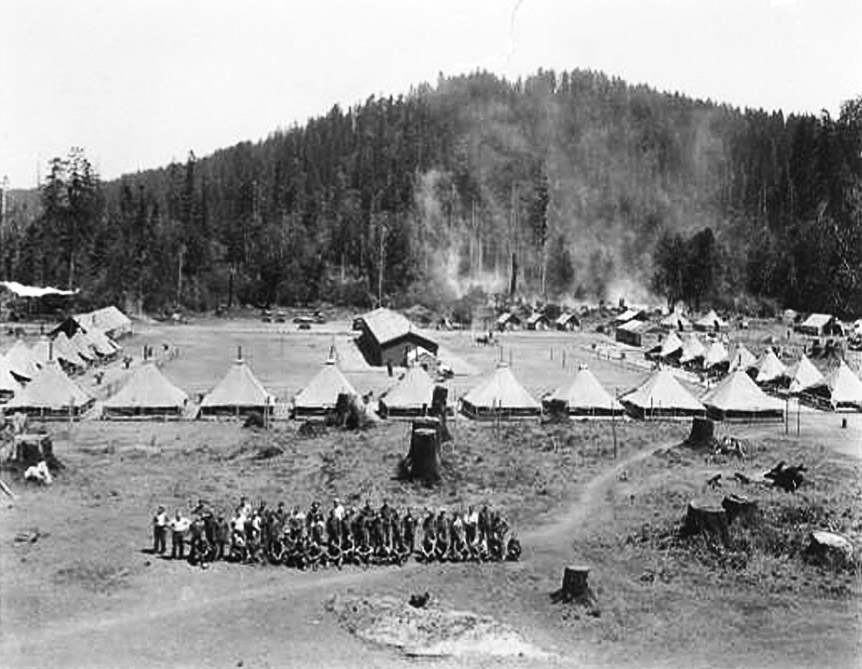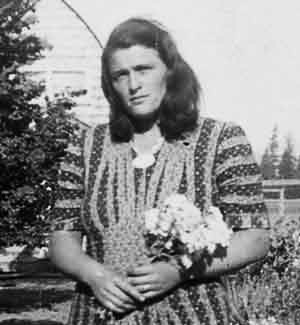The Federal Writers' Project was one of five independent branches of the Works Progress Administration, established in the summer of 1935 by President Franklin Delano Roosevelt. In its inception, the WPA sponsored not only the Writers' Project, but also the Federal Art Project, Federal Music Project, Historical Records Survey, and the short-lived Federal Theatre Project. Bearing testament to the times, the Theatre Project was branded "socialist" by the House Un-American Activities Committee in 1939 and disbanded. Unlike the Civilian Conservation Corps (1932), where young men worked on roads, bridges, and dams, the Works Progress Administration employed non-construction workers, as well as laborers. In Oregon, the Federal Writers' Project was the most visible white-collar agency of the WPA.
The Writers' Project offered wages of twenty-five to fifty dollars a month, which supported the families of hundreds of young writers. Across America, famous or soon-to-be famous writers such as John Steinbeck, Zora Neale Hurston, Saul Bellow, May Swenson, John Cheever, Ralph Ellison, and Studs Terkel wielded pencils, manual typewriters, and Edison recorders on the government's behalf. They collected stories, conducted interviews, and wrote enough books and pamphlets to fill 84 feet of shelf space. They gathered song lyrics, published travel guides, clipped newspaper articles, and promoted tourism through radio and print programs.
In Oregon, the Writers' Project kept six kinds of files. Writers gathered information on Oregon agriculture, folklore, occupations, transportation systems, recreational opportunities, and ethnic groups. Typically, Oregon writers such as Sarah B. Wrenn, William C. Haight, and Walker Winslow wrote travel guides, including Oregon: End of the Trail, a first-of-its kind tour book intended to entice people onto the state's open roads, and Mt. Hood: A Guide, an illustrated tour of WPA art and craftsmanship at Timberline Lodge.
Always anonymously—and usually without copyright—the Federal Writers' Project printed the annual Oregon Almanac and Oregon Oddities, a wacky My Weekly Reader kind of booklet designed as a state education project for Oregon's elementary school students. Perhaps as a cautionary tale, the Oddities writers once reported that in 1875, a ten-year-old boy from Multnomah County was convicted of stealing candy and "sentenced to three years in the penitentiary."
The Oregon Writers produced radio programs, such as "The Builders of Tomorrow" on Portland's KEX, as well as fourteen guides to Oregon county records repositories. Some proposed projects, such as "Public Library History," "Oregon City Territorial Days," and "WPA Builds Oregon Schools" were either delayed by the onset of World War II or abandoned in the aftermath of December 7, 1941. Later, resurrecting his Project files, Howard McKinley Corning published Dictionary of Oregon History (1956) and Willamette Landings: Ghost Towns of the River (1947), books that were originally promoted as "future publications" by the WPA.
A primary goal of the Federal Writers' Project was to gather oral interviews with aging Oregonians. Between 1935 and 1943, the Oregon Writers chased down Oregon Trail emigrants and first-generation Oregonians who were in their eighties or nineties. This aging population, many who played significant roles in Oregon history, had stories to tell. Happily, the WPA Writers jotted them down, serving as "folklore researchers." They gathered histories of people such as Dr. William Keil (founder of the Aurora Colony), Joab Powell (popular pioneer preacher), and Tabitha Brown (founder of what would become Pacific University).
As historian Douglas Brinkley notes, much of the work of the Writers' Project ended up in boxes, attics, or warehouses rather than on library shelves. No doubt, the outbreak of World War II had much to do with the chaotic pigeonholing of interview materials, manuscripts, and documents. So it was in Oregon.
In 1999, a flood in the basement of the Oregon State Library caused librarians to examine several boxes. They found thousands of pages of Writers' Project files. Three scholars—Tom Nash, Twilo Scofield, and Nancy Appling Salucci—volunteered to examine the files, photocopy the documents on acid-free paper, catalog the materials, and provide a useful index. Those files are now available to the public at the State Library in Salem.
-
![]()
Federal Writers' Project members, 1939.
Courtesy Oregon Hist. Soc. Research Lib., Orhi37614
-
![]()
Federal Writers' Project members at home of Charles Alexander, Albany, Oregon.
Courtesy Oregon Hist. Soc. Research Lib., Orhi37621
-
![]()
Federal Writers' Project members.
Courtesy Oregon Hist. Soc. Research Lib., Orhi37613
-
![]()
"The Oregon Trail" display, by Fed. Writers Project members, 1939, Portland.
Courtesy Oregon Hist. Soc. Research Lib., 002667
-
![]()
Display of books by Federal Writers Project authors, First National Bank, Portland, 1939.
Courtesy Oregon Hist. Soc. Research Lib., 002666
Related Entries
-
![Civilian Conservation Corps in Coos County]()
Civilian Conservation Corps in Coos County
From 1933 to 1942, Civilian Conservation Corps (CCC) enrollees in Coos …
-
![Darrel Austin (1907-1994)]()
Darrel Austin (1907-1994)
Darrel Austin, an Oregon artist who gained a national reputation, was b…
-
![Ivan Hathaway Jones (1870-1937)]()
Ivan Hathaway Jones (1870-1937)
Hathaway Jones was proud to be Oregon's biggest liar. While others occa…
-
![Louis Bunce (1907-1983)]()
Louis Bunce (1907-1983)
Louis Bunce, a major painter and printmaker beginning in the 1930s, is …
-
![Martina Gangle Curl (1906 - 1994)]()
Martina Gangle Curl (1906 - 1994)
Martina Gangle Curl was a painter, printmaker, and woodcarver who creat…
-
![Percy Manser (1886-1973)]()
Percy Manser (1886-1973)
Born in Kent, England, in 1886 and trained at the King Charles School o…
-
![Timberline Lodge]()
Timberline Lodge
Timberline Lodge is the showplace for Works Progress Administration pro…
Map This on the Oregon History WayFinder
The Oregon History Wayfinder is an interactive map that identifies significant places, people, and events in Oregon history.
Further Reading
Corning, Howard McKinley. Willamette Landings.1947. Reprint, Portland: Oregon Historical Society Press, 2004.















